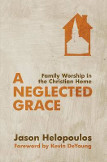
Put No Confidence in Princes
God has a way of making a point. We know this, but sometimes the point is subtle but nonetheless significant in making known His ways to His people. Such is the case in the narrative of 2 Kings 5, which focuses on a notorious pagan military commander named Naaman, who had leprosy.
In this remarkable story, we learn about a man who had everything the world had to offer and yet couldn't get the help he desperately needed. Naaman was a man of great accomplishment and fame, recognized not the least for his character and courage –but he was also known for his leprosy. It was on account of this leprosy that Naaman was willing to leverage all that he had going for him with the hope of one day being healed.
Interestingly enough, it was God’s providence for which Naaman’s victory over Israel is credited. It was also God’s providence as a result of the military raids that caused a little Hebrew girl to become a servant to Naaman’s wife. It was through the mouth of this little, Hebrew slave girl that Naaman first heard the good news which would end up changing his life. Prior to that happening, this servant girl had to open her heart with love and compassion to the very military leader responsible for the likely murder of her parents (and possibly siblings).
The fact that God had done all this could easily be assumed upon a superficial reading of the text. But there is another point in the structure of the text that, juxtaposed to God’s work, communicates a central truth about God’s ways with man. In Biblical literature, emphasis or meaning is often communicated through creative literary structures. Scribes did not have highlighters or other ways to stress emphasis or meaning, but they did have other literary tools, including one called a chiastic structure.
A chiasm is a pattern or sequence in the text that reciprocates or reverses in sequence. There is an intentional arrangement in the text such that the author would reflect and meditate on not only what is being said but how it is being said. The chiastic structure, for example, would be A-B-C-C-B-A where the statements in line A, B, and C are paired together respectively. And as often the case, the center pair of Cs carry a central meaning to the pericope (i.e. self-contained division of the chapter) or body of text as a whole. The narrative of Naaman, and more particularly the characters depicted in the unfolding of this narrative, illustrate such a chiasm.
The story begins with Naaman (A), who, upon superficial reading of the text, is perhaps the seen as the central figure. But following Naaman, we read about the little servant girl (B) who became the catalyst for the events that unfolded. Following her is the king of Syria (C) who issues a letter of commendation to the king of Israel (C). As you can see, the pattern now begins to reverse or reciprocate. When the king of Israel was unable to help Naaman, he was introduced to Elisha through another servant (B). And finally, as the narrative concludes, Naaman (A) is no longer a leper, but his skin is like that of a child, completely healed because “he believed the word of the man of God.”
To be sure, there is something to be said about all three sets of pairs in this texts. The conversion of Naaman as a pagan ruler to a follower of Jehovah is powerful. The witness and testimony of the role of the servants causes us to think how the poor and marginalized are granted understanding that the mighty and wealthy do not possess. But it is the central pair about the two kings that particularly draws my interest.
In a fallen world where sinners are living in active rebellion and unbelief toward God, the only real hope and help they have for this life is not available to them apart from the good news. They are left to hope only in this life only (1 Cor. 15:19), having no real hope and without God in this world (Eph. 2:12). Therefore, the divine mantle is placed on persons and institutions incapable and unworthy of bearing such a responsibility. Governments are terrible gods. The kings of the earth are wholly inadequate messiahs. There is wisdom in the outcry of Israel’s king that day when he said to Naaman, “Am I God, to kill and to make alive…?”
And yet today, it is a strong temptation to indeed think that hope and change can be found elsewhere than in the Gospel of Jesus Christ. It is striking that, in the midst of incompetence and failure through the kings of the world, what provoked Naaman to seek help (through the servant girl) and what persuaded Naaman to listen and obey (through his own servants) was the Good News received again and again.
The Good News of the Gospel reminds us that we have we have a king who did not tear his garments in embarrassment and frustrated humiliation. The Gospel tells us that King Jesus had his flesh torn apart in judgment so that, in his death, he might become the curse and take the condemnation our sins required. The Gospel tells us that in His death, death itself was defeated, so that as the first born from among the dead, all who come to King Jesus will know that He and He alone is the one who can raise sinners--who are dead in their transgressions--and bring them back to life.
So if the chiastic structure of 2 kings 5 tells us something today, it is that we must believe the Good News of the Gospel, and to set our hope fully on the grace of God that is ours in Christ Jesus. The Psalmist rightly declares in Psalm 146:3, “Put not your trust in princes, in a son of man, in whom there is no salvation.” That is a humbling lesson Naaman learned in his life, and it is a lesson we continue to learn as we walk out our life in Christ through repentance and faith, finding the help and hope only in the Maker of heaven and earth (Psalm 121:1-2). The Gospel makes us sing aloud:
Hallelujah, praise Jehovah, O my soul, Jehovah praise. I will sing the glorious praises of my God through all my days. Put no confidence in princes, nor for help on man depend; He shall die, to dust returning, And his purposes shall end.
Related Resources
Walter Kaiser and Moise Silva Introduction to Biblical Hermenuetics (bottom of pg. 75 ff.)



















 © Alliance of Confessing Evangelicals
© Alliance of Confessing Evangelicals


